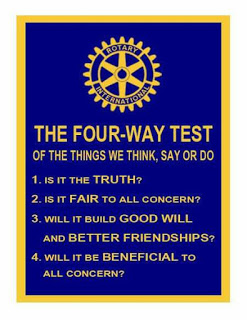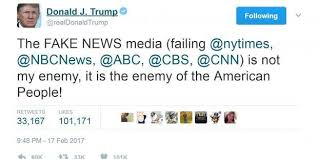


A recent issue of the "Guardian Weekly" discussed at length the response to the shocking incident of the gas attack in Douma in Syria. The Assad denialists claimed there were no deaths in Douma, but if there were they did not involve chemical weapons. Then again if there were chemical weapons, the rebel groups, the White Helmet volunteers, were responsible, or the whole thing was staged in a TV studio in Britain. So, the argument is no longer our response to the event, but to the very existence of the event. The perpetrators have achieved their purpose, we are confused, we don't know what to believe and who to trust.
But we don't need to look too far from home to find instances of inaccurate information from those anxious to be "first with the news". One morning during a severe storm in Wellington a talk-back radio station broadcast a phone call from a listener who stated, "The Eastbourne ferry is on the rocks at Seatoun and it is sinking". A grandson was on that vessel and you can imagine the effect on his mother who happened to have the radio on at that time. So much for the accuracy of an eye witness account. The woman had given her opinion of what she had seen, it was not factual but to her it was the truth.
There was an occasion when almost the whole of the front page of the Dom. Post was taken up with an article headed, "Delays left skull injury untreated” and including a large photo of the healthy-looking young woman involved. It was claimed that she had waited for nearly two months for treatment for an apparent skull fracture, the delay resulting in incorrect healing leading to, "the need for complex reconstructive surgery". It took a week for the response to the story to appear in the Letters to the Editor, explaining any delay, and indicating that the problem was a simple cosmetic one associated with a small depression of the bone of the forehead, not apparent in the photo, and that she did not have a fractured skull.
Jonathan Swift (1667-1745) stated it well when he said, "Falsehood flies, and truth comes limping after, so that once men have come to be undeceived, it is too late".


It becomes more of a challenge than ever to separate truth from falsehood, to be appropriately skeptical without being totally cynical. It is easy to cherry-pick from the wealth of information available and come up with whatever conclusion we desire. It was Plato who said, "Reason is the road to all truths", and with respect for the authority of the source of the information, and applying logic, experience, evidence and judgement, we should be able to come a little closer to the answer to any question, "Is it the Truth?"